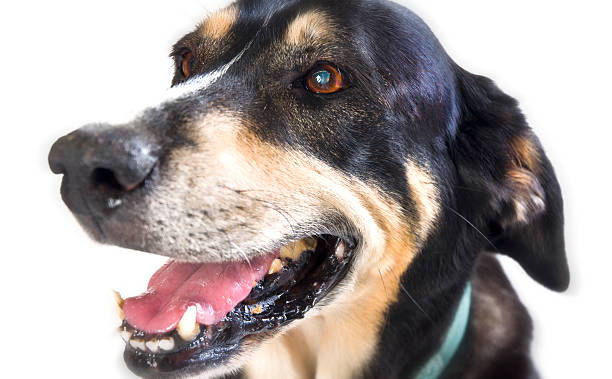The Irish Setter originates in Ireland and is a breed of gun dog. Because of their lavish coats of flaming red, Setters are easily distinguished from other dogs. But, does an Irish Setter dog black coat exist? No worries as we can get to know more about them better as we go along.
Despite their relative rarity, these dogs are great companions and a lot of fun to have around. Due to this, the Irish Setter is a fantastic pet for energetic families with or without kids. Irish Setters are friendly and sociable creatures that do well in a variety of settings.
What’s not to like, then? Well, like any dog, this one isn’t the best fit for every family. They’re considered to have more stamina than average and to require a little more attention than other breeds.
This article discusses some details about the Irish Setters and the Irish Setter dog black. From their activity requirements and personalities to their preferred living environments, all of them are here. Learn the ins and outs of maintaining that luxurious coat. Let’s dive in and see if this puppy fits in with your household!
The History of the Irish Setter
There was a time when the Irish Setter wasn’t completely red. Records of this breed date back to the middle of the 17th century, and they initially mentioned a dog with a red and white coat. Some of the earliest depictions of dogs in art date back over a century prior to that. The Irish Setter could have a variety of canine ancestors, including the English Setter, the Spaniel, the Pointer, and the Gordon Setter.
Due to their high visibility in the field, red and white hounds were frequently preferred by hunters. Although solid-red dogs did exist, it wasn’t until dog exhibitions were popular in the middle to late 19th century that dark, solid-red canines were considered desirable.
Because they looked so distinct from the red and white variety, Americans first referred to the remarkable canines as Irish Red Setters. The AKC gave the breed its seal of approval in 1878. The American Kennel Club (AKC) now lists Irish Setters as the 77th most popular breed of dog.
Size & Appearance
The average weight of an Irish Setter is between 60 and 70 pounds. Males should weigh about 70 pounds and females about 60 pounds, as specified by the breed standard. In general, females tend to be 25 inches tall. Similarly, males are predicted to be 27 inches tall. He has a sturdy but refined physique.
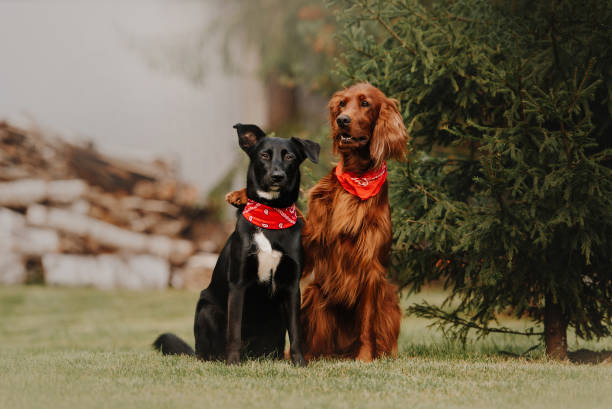
This puppy certainly doesn’t look like a common hunting dog because he’s quite handsome. The breed has been called “the most attractive of all canines” by many artists. He has a flat topline and is longer than he is tall. This Setter can be recognized by his rounded skull and large, drooping ears. His graceful hunting is aided by his long neck, long tail, and deep chest.
In the world of Red Setters, there are two distinct styles. In the beginning, dogs were bred to achieve a specific “breed standard,” which led to their development instead of being picked for their fielding skills. It was a blow to Irish admirers, and as a result, they started putting more emphasis on performance than aesthetics.
Those who are raised to compete in confirmation events will have proportions that are very close to what the breed standard says. Many dog breeds have gone through this transformation; for example, the Lab has split into a “bench” variety and a “field” variety. For obvious reasons, hunting dogs are bred to be much more agile and slender. Talk to your breeder about this issue if it’s essential to you.
Exercise Requirements
The Irish Setter is a very active dog, which makes sense since he was originally bred to hunt. A different breed of dog would be more suitable if you’re seeking a companion who’s content to lounge around all day. This dog might be the best friend for someone who lives a full and exciting life. The minimum amount of daily exercise he needs is one hour.
This dog might become destructive and unhappy if not exercised enough. That’s a far cry from the cheerful, amiable dog he typically is. If you lock him up or leave him alone, he will quickly ruin your most prized possessions. So, if you want to keep things peaceful with this redhead, you need to be able to exercise him enough.
You have no room for apologies. And as one might expect from an Irishman, he doesn’t mind getting his mane wet. The breed definitely prefers walks in the woods and the countryside. But if he’s doing it with you, he’s all for it.
Whatever he sets his paw to, from running to agility classes, flyball to discs, he excels at. You should take special care to avoid causing any harm to his young joints by overexerting him. So that he doesn’t become bored, you should look for a wide range of activities to do together. You and your Irish should check out the Irish Setter Association of America’s website, where they announce interesting activities like hunting competitions.
Living Conditions
A ground-floor apartment with a yard would be ideal for him. To thrive, this breed must have regular, unrestricted access to outdoor space. As a result of his high prey drive, he is likely to chase after moving objects such as cats, automobiles, and birds. In the end, they require a fenced-in yard. He is a big dog, but not massive like a mastiff.
Therefore, a big house isn’t necessary. In other words, he won’t know he’s gone until it’s too late! The Irish Setter’s calm and patient demeanor makes it an excellent family pet for children of all ages, as well as senior citizens and young couples. He adjusts well to your family’s dynamics as long as he knows they will always have his back.
Having other pets in the house makes him happy, too. Your cat is your cat, and the neighbor’s cat is not. We only request that you not bring any chickens or other birds. He would enjoy being around other dogs if he had been properly socialized as a puppy.
Highlights of Irish Setters
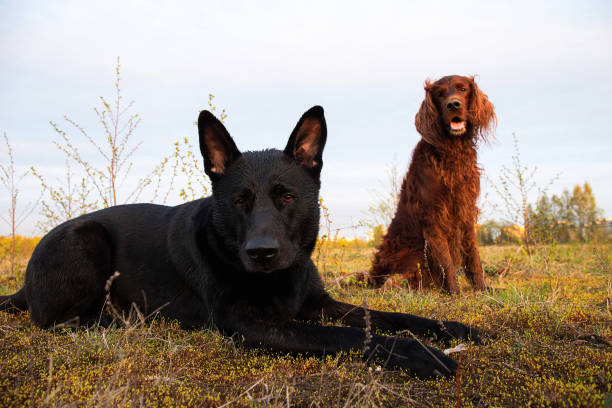
Separation Anxiety
Irish Setters can have severe separation anxiety because they are so attached to the people they live with. Isolation causes them great distress, which often takes the form of destructive behavior. Irish Setters are best as inside pets that are close to their human families rather than left outside.
Activity Requirements
Irish Setters are best kept in a big, fenced yard where they may safely run and play. This kind of Setter has high activity needs and requires at least a half-hour daily walk routine.
Training
Because Irish Setters are rambunctious and often stubborn, you need to train them to obey your commands. Irish Setters are wonderful dogs to have with other kids and pets. But it’s important to socialize your puppy well, no matter what breed it is or where you live. It’s possible that you don’t have any kids or pets right now, but that could change. Many issues can arise from insufficient socialization.
Caring
To keep their long, silky hair from getting tangled, Irish Setters need to be groomed every day or once a month. Since they shed moderately, you should expect to see some hair around the house during the shedding season. An Irish Setter puppy needs lots of love and attention as it develops. Some dog breeds are fully grown by the time they’re two years old, while others remain immature forever.
Curiosity
Irish Setters, being naturally curious dogs, will sniff about and inspect whatever they can get their paws on.
Tones and Fur
One of an Irish Setter’s most eye-catching features is his coat. It’s not too long or too short, and it falls level and smoothly across his frame. His head’s foreleg hair is short, while it gradually grows longer toward the back. The ear hair is feathery and smooth, like a Spaniel’s. The tail fringe is around the average length and gradually shortens.
Rather than having waves or curls, ruffled hair ought to be as direct as possible. Trim his coat so that his trim head and neck are prominently displayed as a mark of your Irish pride. The three available colors for this breed are all variations on a single theme: a deep red coat. There are three colors: crimson, mahogany, and chestnut. With that in mind, how about the Irish Setter dog black?
Redheads, if they could speak, would inform you that they have more fun than blondes. Occasionally, you’ll see a canine with a bit of white on its chest, throat, or paws. Or maybe a faint white line ran vertically through his head. White spots are much rarer than solid red ones. Some are born with black on their hair, which is a fatal flaw in the competitive dog show world.
People often think that the Irish Setter, the English Setter, and the Gordon Setter are all the same breed of dog because they look and sound alike. However, each species has its own origin story and function in the world. Both the “unwanted” black and the “desirable” white come from the English and Gordon gene pools, respectively.
Irish Setter Colors: The Irish Setter Dog Black
Both the American Kennel Club and the owners I’ve talked to agree that Irish Setters should only be one of the following colors:
- Chestnut is the traditional hue of Irish Setters.
- Mahogany is the color of an Irish Setter.
- The conventional color for an Irish Setter is crimson.
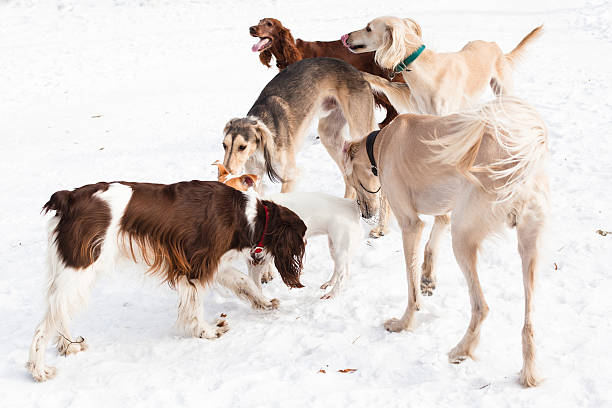 An Irish Setter that has a mix of white and black is not a purebred. The majority of breeders and owners of purebred Irish Setters do not recognize or use the term “multicolor” to describe their dogs. A dog of this breed must be painted in these specified colors.
An Irish Setter that has a mix of white and black is not a purebred. The majority of breeders and owners of purebred Irish Setters do not recognize or use the term “multicolor” to describe their dogs. A dog of this breed must be painted in these specified colors.
The majority of purebred Irish Setters are chestnut in color. Differences in shade make it possible to identify the many shades of reddish brown.
Irish Setter Dog Black – Its Existence
Many dog owners want to know if the purebred Irish Setter dog black exists. Sadly, the reply is not yes. There are, nonetheless, reasonable explanations for the common misunderstanding. People often think that there are black Irish Setters because the breed is related to the Gordon Setter.
Even though the AKC has recognized Gordon Setters and Irish Setters as two different breeds of dog for a long time, the two are sometimes mistaken for each other. They look exactly the same except for having longer necks and shorter muzzles. Because of their length and superficial similarity, many people confuse them. Dogs of the Gordon Setter breed tend to be quite black, with a brownish gloss to their fur.
Dark-Color Mixed Irish Setters
A black Setter might be the result of breeding two Irish Setters together. Because of the different pigments used to make it, it comes in a wide range of colors. Black Labrador Retrievers are a popular breed for Irish Setters to cross-pollinate with. Any puppy with black Lab and Irish Setter blood would, predictably, have a black coat.
Also, if a Gordon Setter and an Irish Setter got together, they might have a beautiful black puppy. Therefore, a black Irish Setter dog is not hard to find if you know it exists. To be clear, this won’t be a purebred.
It will share a lot of physical characteristics with Setters, but its genes will be from a separate breed. Mixes among Irish Setters and Terriers are rather common, and they sometimes have offspring with a long black coat and brown markings. The overall effect of this pairing is profound yet understated.
Irish Setter Dog Black: Gene Recessiveness
When the effect of recessive genes on coat color is taken into account, the problem gets harder. Some people think that recessive gene changes could cause some Irish Setters to be black, but this is not the case.
Canine fur contains both black and red pigments. A dog’s coat can be dyed any hue using one of these pigments.
The Irish Setter is considered an expansion breed because of its red coat. All the genes that normally make people black are suddenly rendered invisible, making this a recessive red trait. Even though this question might seem like a trick, academic papers and books have given a clear “no” answer.
The Basics of Irish Setter Grooming
The coat of this Irish redhead is somewhat long overall but thin and delicate on the face and front legs. The ears, the linebackers of the thighs, the chest, the stomach, and the tail, however, are covered in long, silky feathering. In order to eliminate and prevent mats, the coats should be cleaned and groomed at least once a day, seven days a week.
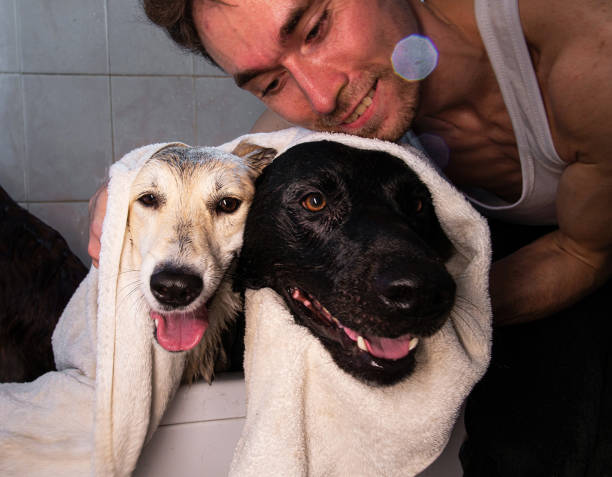
Bathing once every week or every other week is recommended. In all other respects, standard care should be expected. Nails should be trimmed regularly, once per week or two is typical.
Good oral hygiene and fresh breath start with brushing your pet’s teeth regularly with a toothpaste that your vet has approved. In order to avoid bacterial or yeast infections, it is important to regularly wipe and dry the long, dangling ears.
Adopting an Irish Setter Dog
If you wish to adopt a dog, you can choose from many wonderful possibilities at animal shelters and breed rescue groups. This sets the emergence of your dog hunting journey.
1-Use the Web
You may quickly and easily find an Irish Setter in your neighborhood by using websites like Petfinder.com or Adopt-a-Pet.com. On this site, you can conduct searches that are as broad or as narrow as you want (for example, housetraining status). AnimalShelter is a resource for locating local animal shelters.
Additionally, you can check the “pets looking for homes” sections of local newspapers. Finding a dog through social media is also a terrific option. By posting a wanted ad on Facebook for a certain breed, you can get the help of everyone in your area.
2-Reach Out to Local Experts
Get the word out to any and all local pet professionals that you are interested in adopting an Irish Setter. That includes pet doctors, doggie daycare providers, and spas. If you or someone you know is facing the difficult decision of rehoming a dog, you may want to ask someone you trust for recommendations.
3-Talk to Breed Rescue
Those who are already fans of Irish Setters tend to adore the breed in its various forms. That’s why several dog breeds have their own shelters for stray dogs and strays that belong to their breed. Through the rescue network set up by the Irish Setter Club of America, there are many Irish Setters looking for new homes. Find local Irish Setter rescues by doing an internet search.
Most breed rescue organizations are honest about the dogs’ health and are a good place to get guidance. They might also let you foster an Irish Setter, which means that after getting the right training, you could bring one home to try out run.
Frequently Asked Questions
Q:Could a black Irish Setter exist?
A purebred Irish Setter will be a deep shade of chestnut red or mahogany.
Q: What other breeds of dog resemble black Irish Setters?
Large bones and a black-and-tan coat distinguish the Gordon. Originally, this breed of dog originated in the north of Scotland, where it was bred by Alexander IV, Duke of Gordon, to be an efficient hunter in the region’s hilly terrain.
Q: Does an Irish Setter make any noise?
A setter’s bark is easily heard. Some setters not only bark loudly, but also insist on inserting their own brand of setter ‘talking’ into their human companions’ talks.
Final Thoughts
The Irish Setter is a unique dog breed that stands out for its stunning good looks. Whether he is a redhead or a black dog, he will do well as a member of your family. Getting an Irish Setter might turn out to be the best choice you’ve ever made, just like it has been for many others. And he might be your red-golden nugget at the end of the rainbow.

